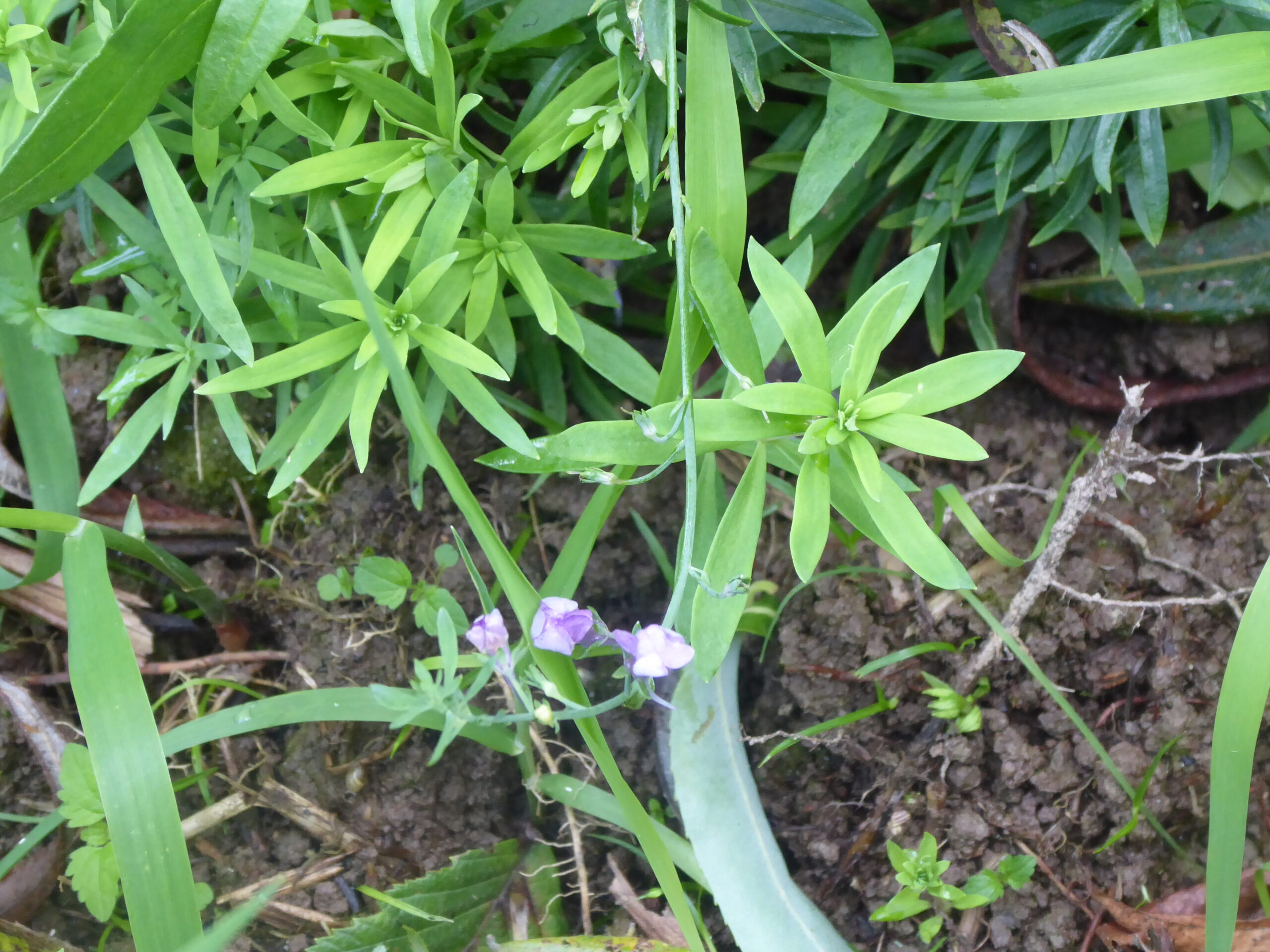It’s amazed me how there are still flowers in the watermeadow, and I certainly wasn’t expecting to make a new flower discovery. This tiny pea flower is, I think, a marsh pea. It has long oval pointed leaves and pea-like tendrils with flowers scrambling up the stem alternately. It’s not supposed to be in flower now – it flowers May-July, but as our Bramley apple tree is in blossom again, so the Marsh Pea might be a bit confused. I’m hoping it will establish itself and flourish, as we have only just discovered it hiding in the undergrowth, but it likes to be among taller plants. It’s “very scattered” outside the Norfolk Broads, so not very common.
-
Brambles (Rubus fruticosus)

Sometimes, when you’re looking for something new, you see something that’s been there all along. Brambles are an example, they are rambling through the bank (above the Fernery), and we don’t really like their tenacity, but they are underpinning and fixing the other plants in place, which is good for helping to prevent the bank eroding. We used to have eight pampas grasses on the bank and the brambles wove around them in a tangled mess, but we removed the pampas grasses last summer and in the craters that were left behind we planted a silver birch and a mountain ash and let the bank itself fill in the gaps. It did this fairly quickly with grasses, ferns, and flowers. The brambles could have taken over but haven’t so far and a nice balance has been struck. We’re aware that this happy situation may not last though as brambles are prolific at sending out runners, which touch down, grow roots, and pop up a new plant.
-
Alder (Alnus glutinosa) and Woolly Alder Sawfly
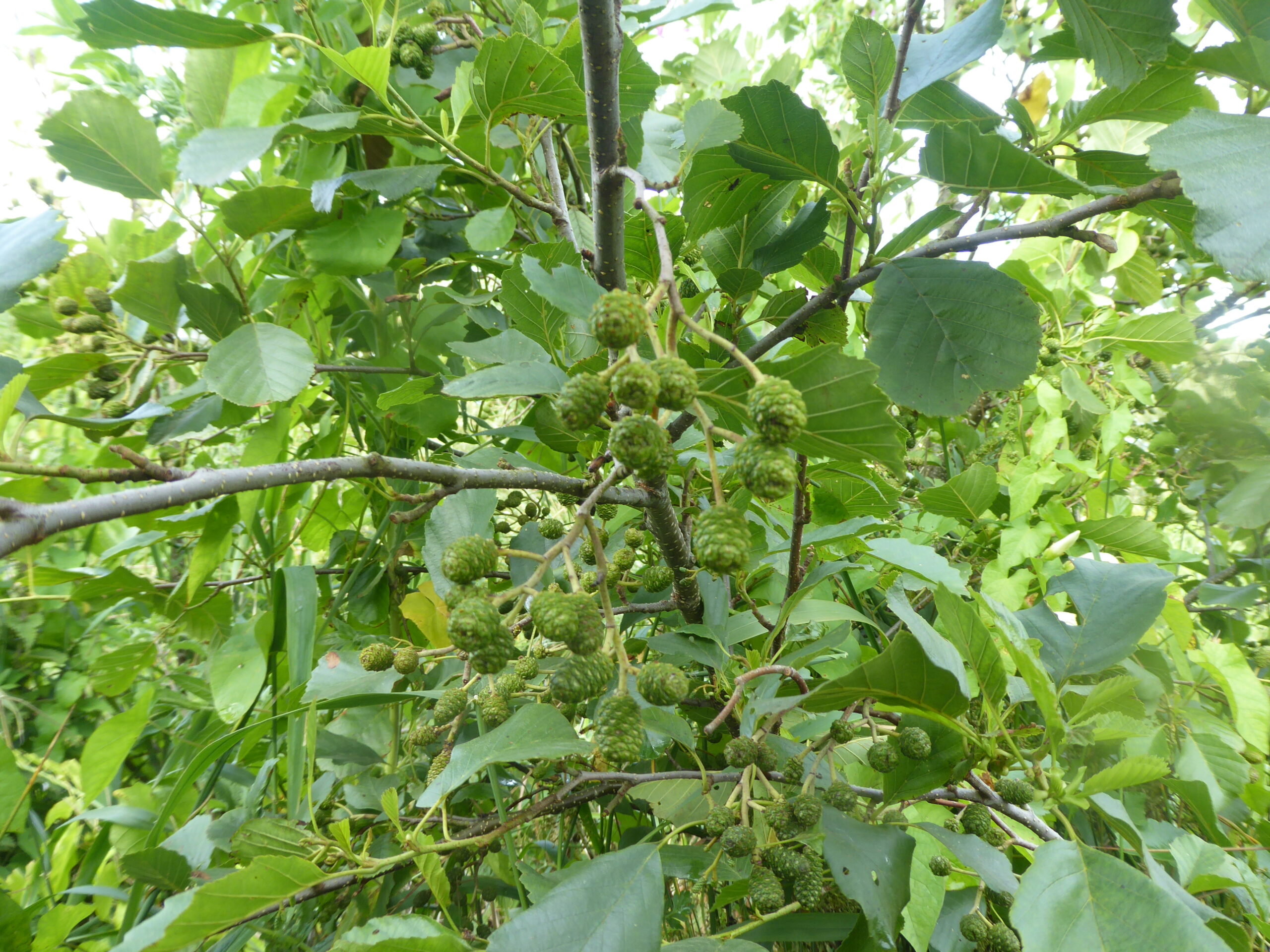
Yesterday, I took part in the Big River Watch. I spent 15 minutes over on the far bank of the stream, just watching the water (plus time to tot up the plant life and enter data on the app). It wasn’t as productive as the Big Butterfly Count back in August. From the list I was only able to record flies and could add up to three other things not on the list. I added a blackbird, water mint and wild angelica. Other items that I saw were the usual suspects … dung flies, slugs, and spiders, water pepper, grass, stinging nettles, dock, branched burr-reed, forget-me-not, bedstraws, and the bindweed which is trying to strangle the smallest of the new alders. The water quality was quite sludgy, with bubbles popping and an oily sheen in places.
I mentioned the alders and haven’t officially recorded them yet. We planted the alders – ten in 2020 (of which we have seven left, which are now about 10-12 feet tall) – and another eighteen this spring. We have been told that alders were good for soaking up flood water and we have noticed that they are less invasive than the willows, which pop up saplings even from prunings left lying around. There is a really good information resource on The Woodland Trust website. The picture above shows the female catkins on one of the trees in July. The latest alder saplings are all growing at different rates, some are six foot tall already, others have lost a lot of leaves or are patchy. We saw the Birch Sawfly Larvae the other week on some alders in pots. Yesterday we noticed the Woolly Alder Sawfly Larvae curled up on some of the saplings in the watermeadow, surrounded by evidence of its feasting. Also some leaves curled and folded with webbing inside -presumably nests of sawfly eggs.
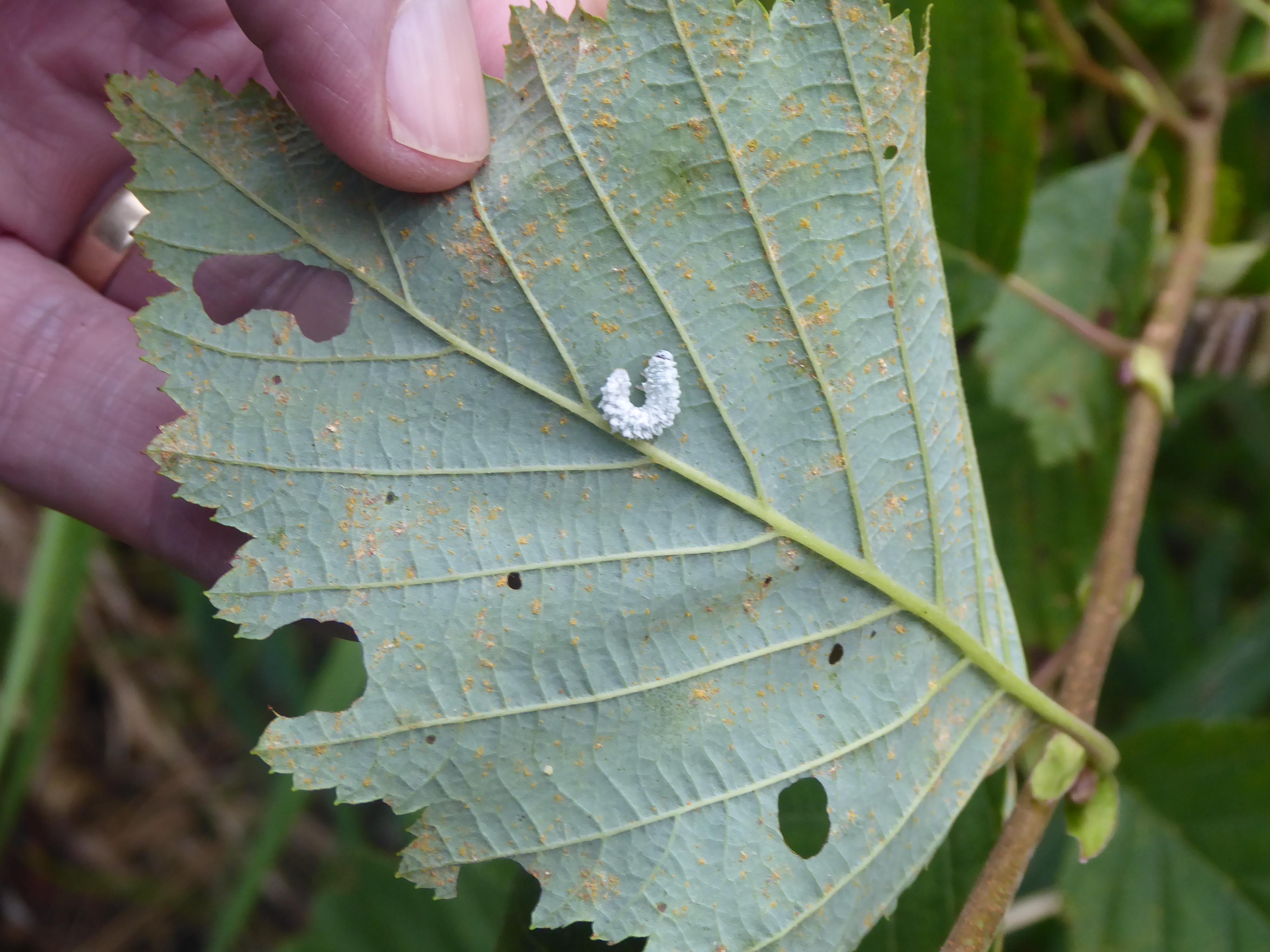
-
Robin
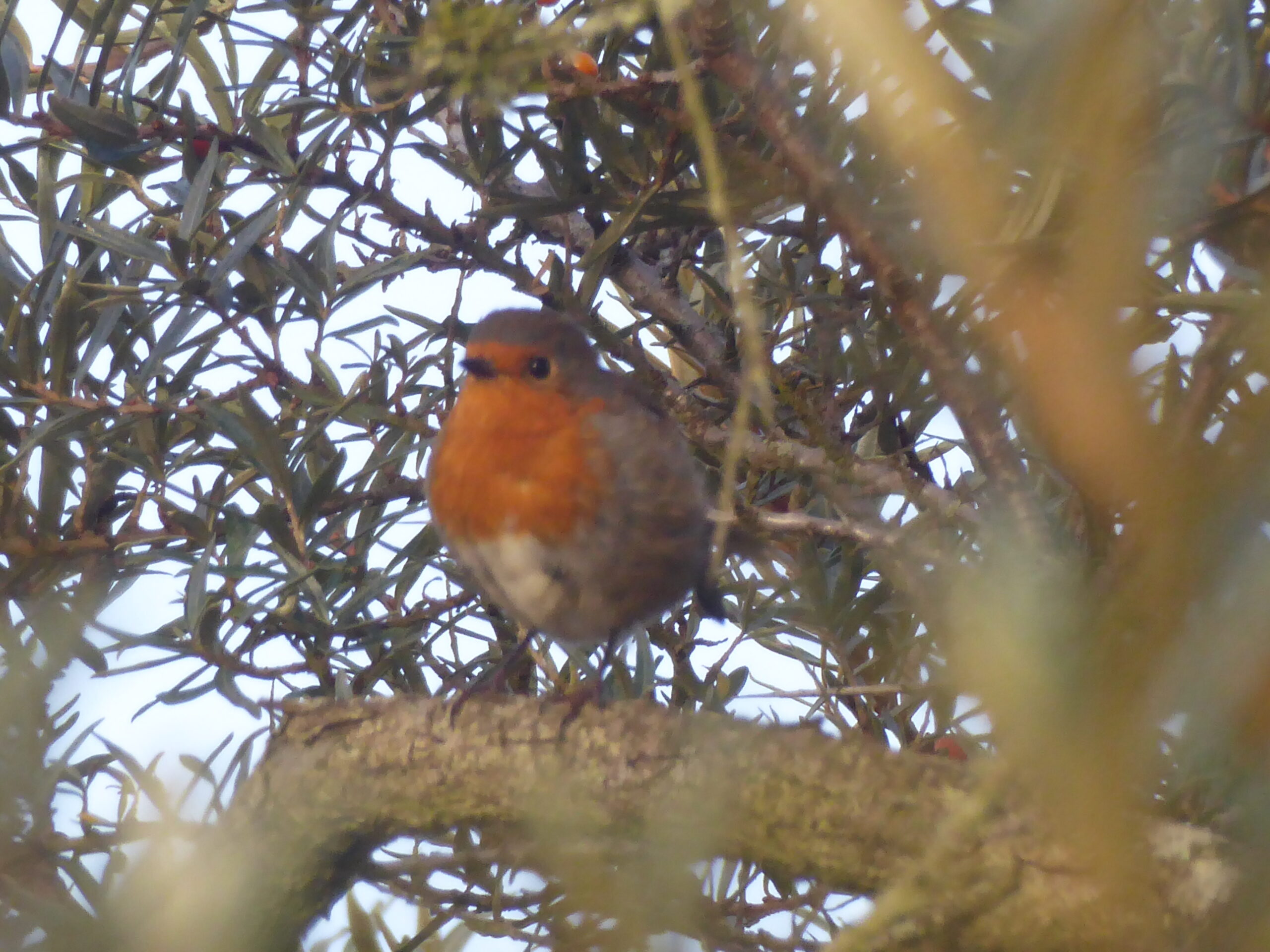
It’s been so stormy that I haven’t ventured down into the watermeadow this week, but I snapped this robin in the sea buckthorn one evening.
-
Giant Willow Aphid (Tuberolachnus salignus)

This little fellow kept climbing over to the other side of the leaf, whenever I tried to take his photo, but eventually I succeeded.
I had no idea he was an aphid – I was guessing weevil because of his size. But it’s not a misnomer – at up to 6mm long he is indeed a giant aphid, the largest variety in the UK.
Appearing steely-grey with black spots, I found out that these aphids are actually dark brown but look grey because of a white dust that forms on them. The other defining feature is a shark-style protuberance on its back. This shows up better in the image on the right.
Like all aphids they live in colonies feeding on the sap of the white willow, common sallow and also quince, apple, and poplar trees. They then excrete the honeydew so beloved of the wasps. So, we have seen a little cycle of life played out in our willow tree! What a neat piece of synchronicity!
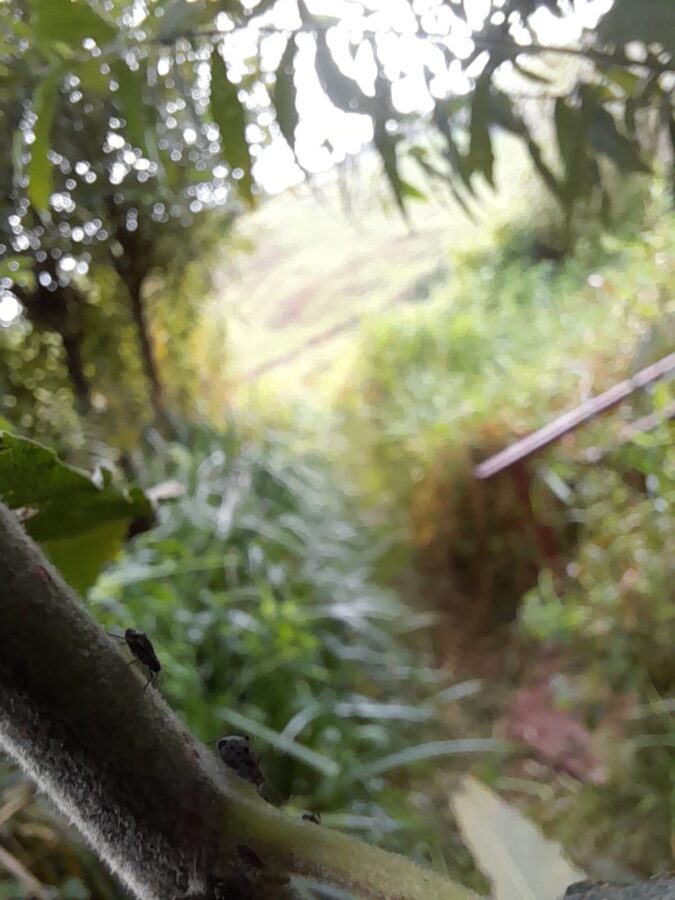
-
Badger
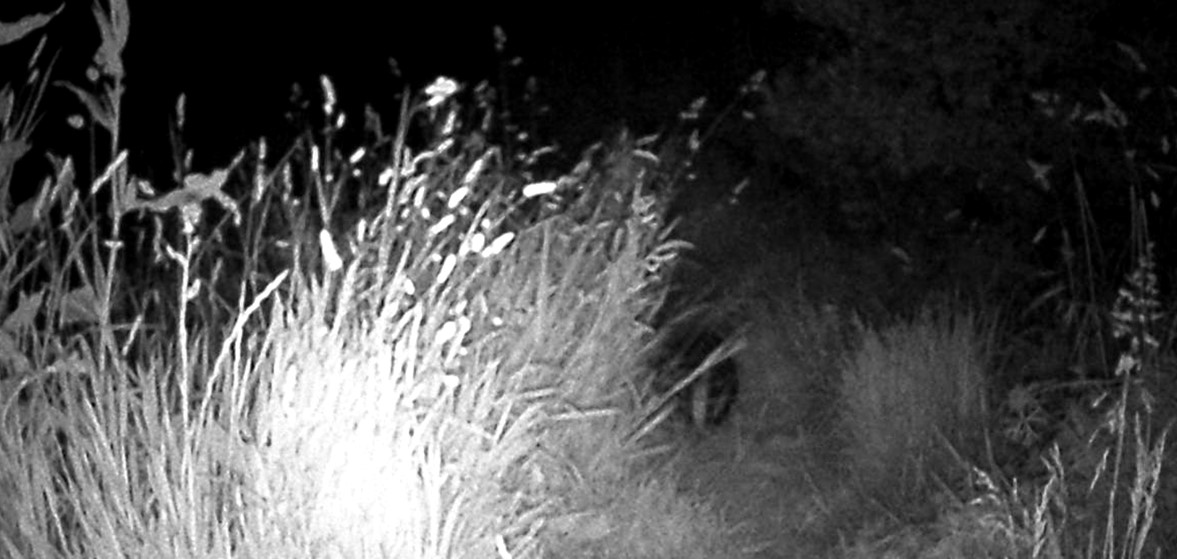
We’ve been struggling to find a good position for our trail cam where it doesn’t get knocked over and where it picks up wildlife, that isn’t just grass waving around. The top of our ramp has proved to be the best vantage point for the badger, and I was delighted that we managed to catch it (especially after I accidentally deleted some footage last year!) I was hoping to catch mice and voles, or the owl, but we need to keep experimenting with locations. I was pleased to learn that there is only one type of badger in the UK. I thought I’d better check, just to make sure. The animal we know as ‘the badger’ is correctly known as the European Badger (Meles meles, which is simply Latin for badger). There are other types of badger in the world – American, Asian, Honey, Chinese ferret-badger etc
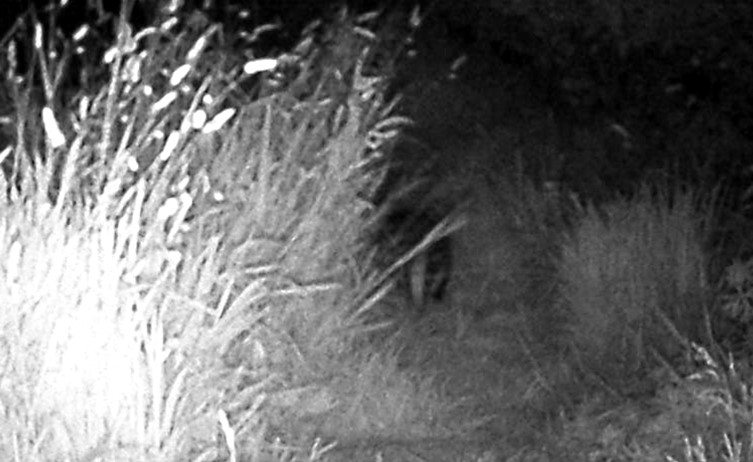
-
Common Drone-fly (Eristalis tenax)
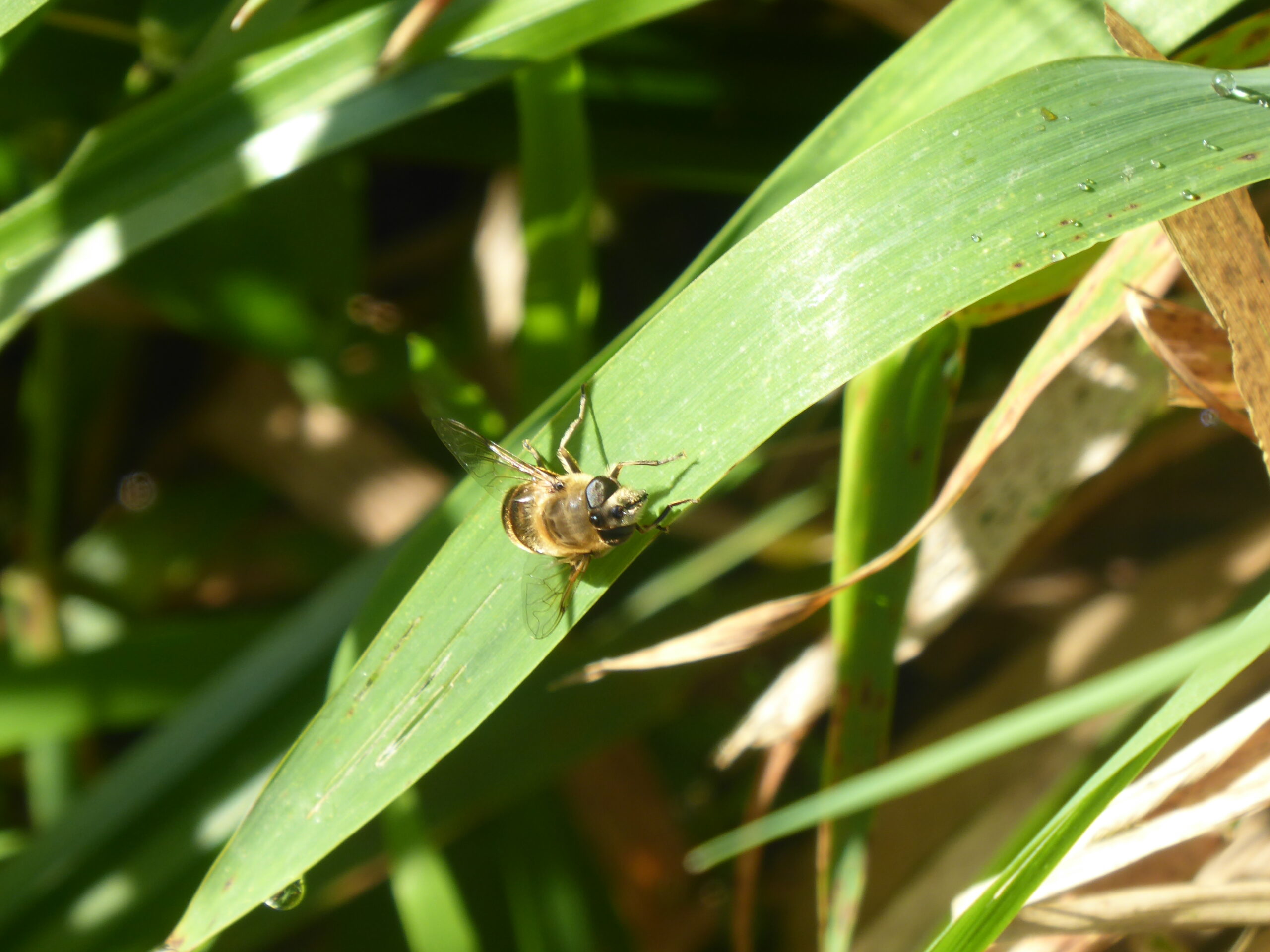
Here’s yet another hover fly. This is the Common Drone Fly. Its distinguishing features are curved and thickened hind feet; vertical stripes of dark hairs on its eyes; and a broad dark facial stripe. The European drone-fly had a pale, dusted face with no line.
This drone-fly is quite furry and has bee-looking stripes, as it is trying to mimic a bee. However, its eyes are large like a house-fly and it doesn’t have a waist. Here’s a common carder bee next to a common drone-fly, so you can see for yourself.
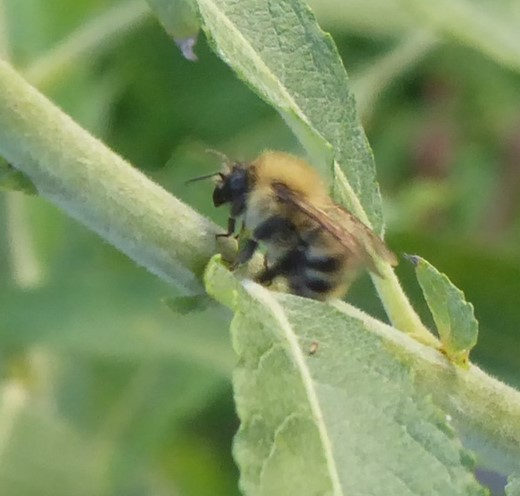
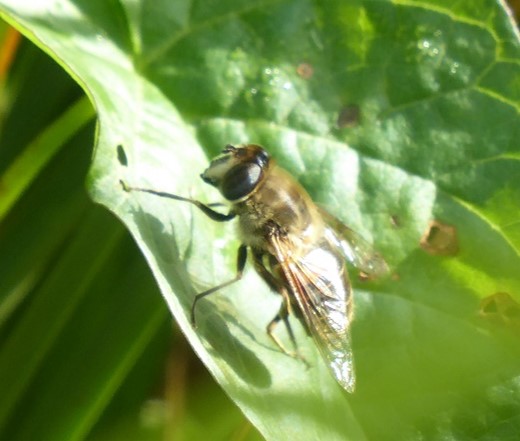
This is the drone-fly. See its large eyes and thicker body. The bee has a definite waist. -
Two slugs – Spanish Slug and Large Red Slug
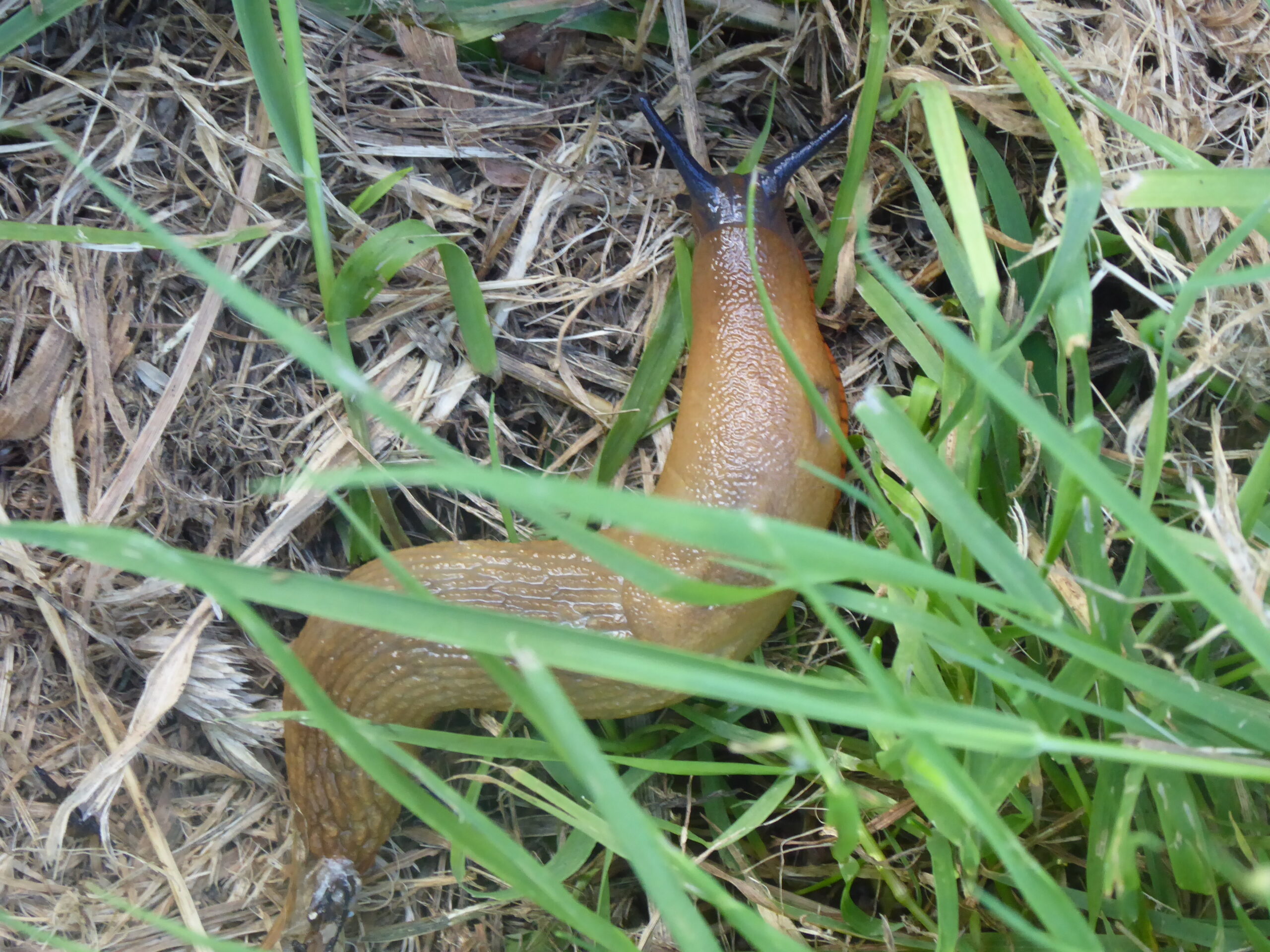
The Large Red Slug (Arion rufus) always has an orange skirt and tends to orange nearer the head, as per this individual.
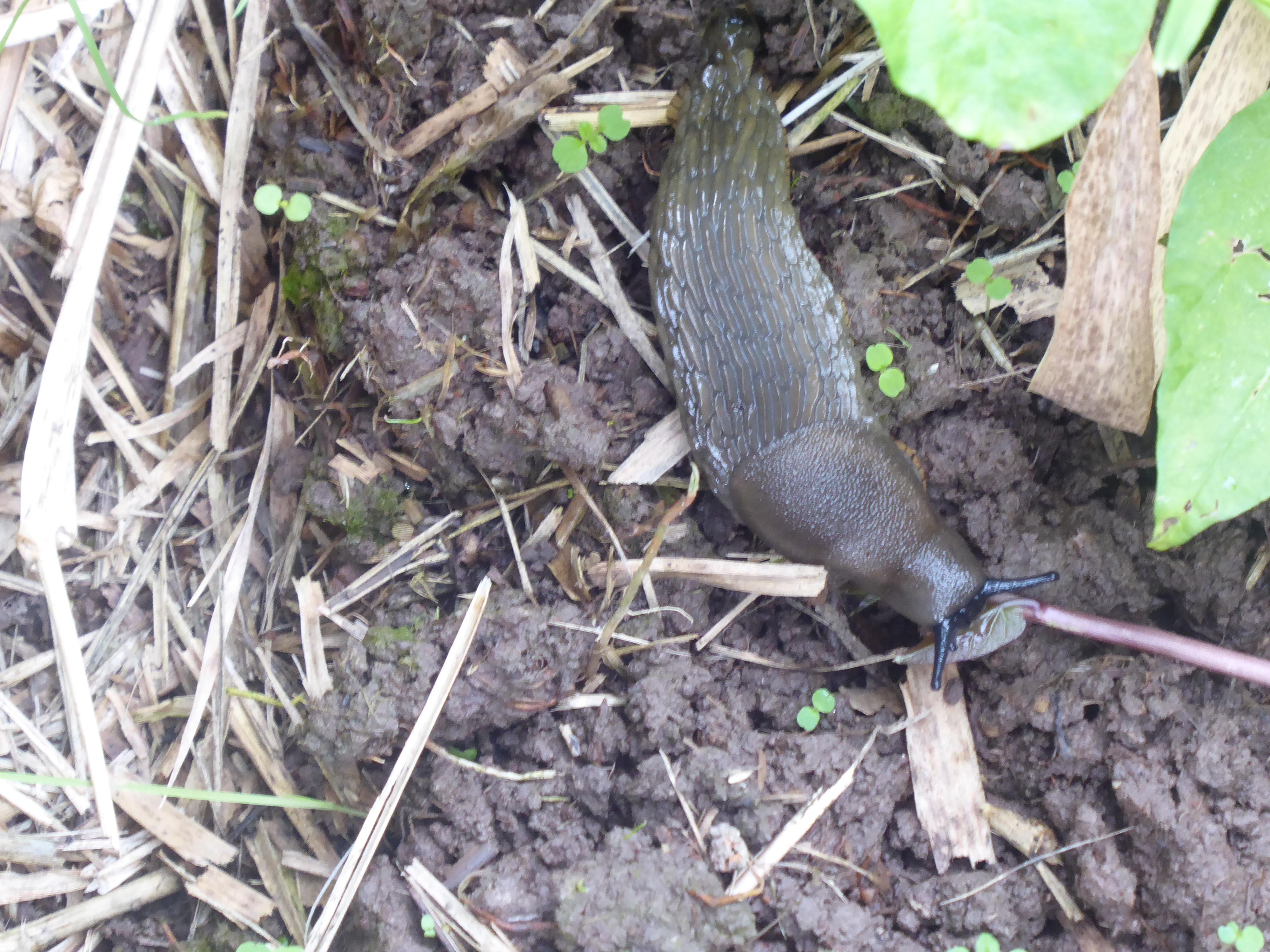
This is a Spanish Slug (Arion vulgaris). It’s a dark sludge coloured slug, but not quite black. I believe it to be a Spanish slug as its sole is darker than the body sides, but this is not conclusive as there are variations and hybridisations among the slug population, which means it is regularly confused with other Arion species. Apparently, the only foolproof method of correctly identifying them is by dissection, so I’d rather pass on being 100% accurate, if that’s okay.
Slugs eat plant leaves, stems, and roots, plant debris and decaying matter, fungi, and earthworms. They can generally be seen at night in spring, summer and autumn in the garden, hedgerows meadows and woods.
Why are slugs so slimy? Their slime has many uses. It prevents them from drying out, helps to propel them forward and makes them taste bad to potential predators. Finally, when they discover a yummy food source, they can follow their slime trail from the night before back to their dinner.
-
These are not caterpillars!
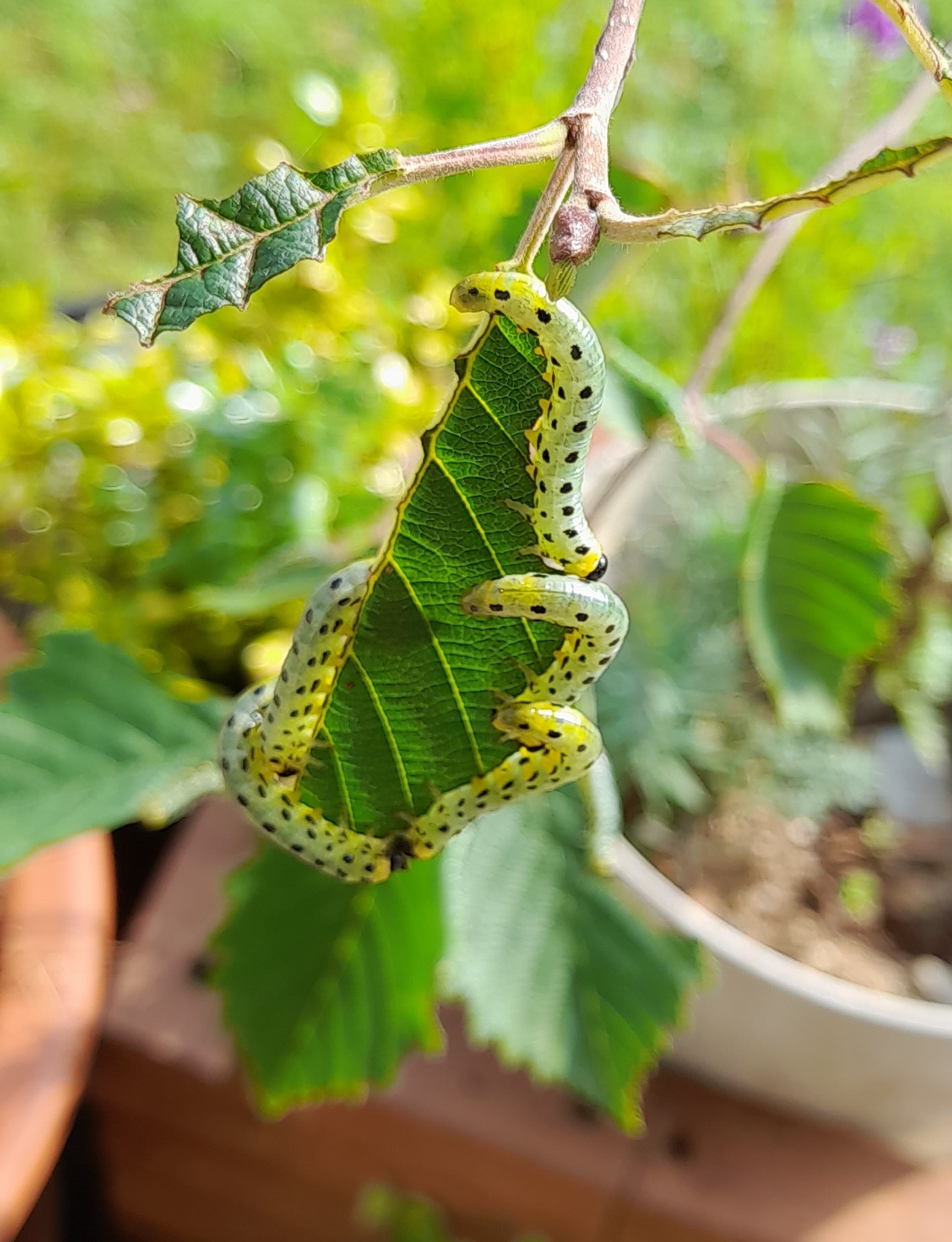
Technically not in the watermeadow, they were on an alder sapling in the top garden, these are the larvae of a Birch Sawfly (Craesus septentrionalis).
These larvae suddenly seemed to appear during the afternoon on the patio. Birch fly larvae feed in crowds on young trees, stripping the leaves of mainly alders and birches from late August to October. They have four rows of around ten black spots running down the length of their body and three pairs of legs followed by rows of false legs, which you can see in the photo.
There was conflicting information online – a different species of Birch Sawfly (Cimbex femoratus) had a plump green larva with a dark stripe running down its back, while Craesus septentrionalis is also known as Nematus septentrionalis, which itself is also known as the Hazel Sawfly. I also read that Nematus septentrionalis was formerly known as Craesus septentrionalis. It all seems a bit ‘mix and match’.
Unlike caterpillars, which only really eat single plant species, the sawfly larvae enjoy a varied diet of maple, hornbeam, hazel, ash, poplar, willow, rowan, alder, and birch. The larvae will pupate and then emerge as small, black adult Birch Sawflies.
UPDATE – From now till 10 March 2024, I’m going to post three times a week only. This is because there will be limited access to the watermeadow and also, I’m not expecting to see as many new species. I should still hit my target as I have been posting more than one species on many days so far. This will give a more accurate representation of the year than if I had relied on a backlog of summer observations to pad out the wintery days.
-
Burdock Gall Fly
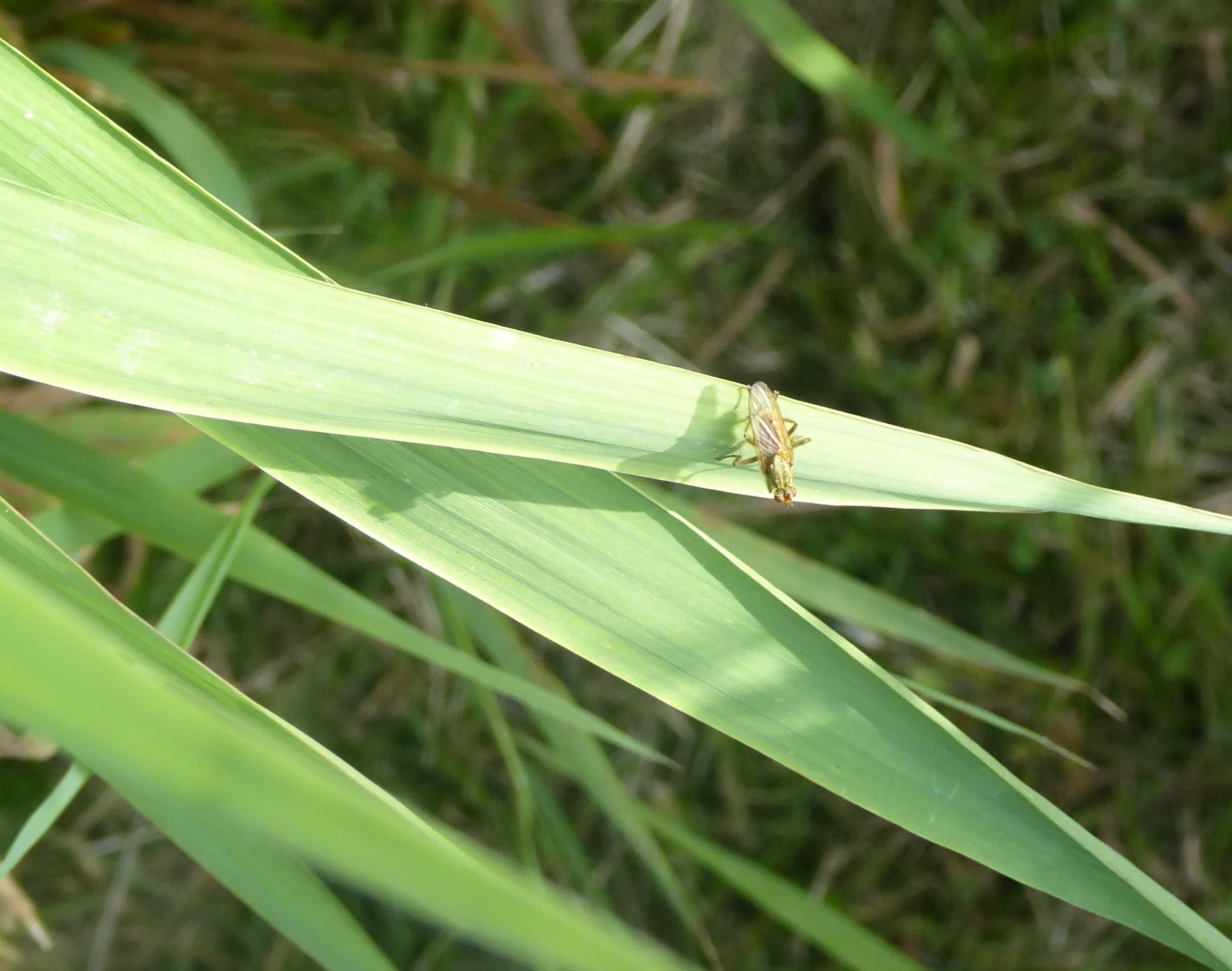
It was worth taking a photo of yet another small fly, as this one turned out to be a different species again. This is a burdock gall fly (Terellia tussilaginis). They have this pale green colour and brown banding on their wings. The larvae live on burdock flowers, causing galls and live in the old flowerheads over the winter.
